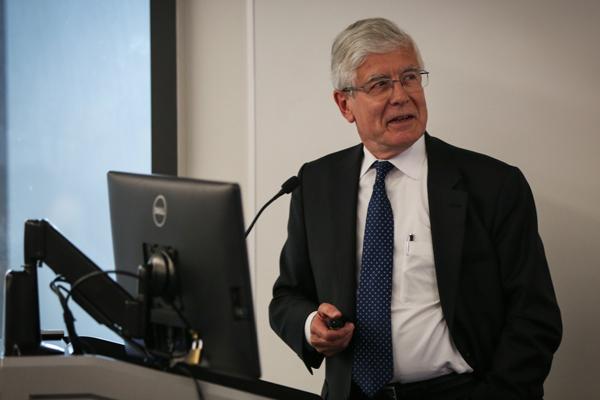Federal subsidies from research grants at the engineering school are expected to bring in $3 million this fiscal year – greater than any amount in any of the past four fiscal years.
Revenue from federal grants in SEAS is 19 percent higher so far this fiscal year than the total revenue in 2015. Officials said the increase in the school is largely because of the new facilities in the Science and Engineering Hall. They said the complex is paying for itself by attracting high-quality faculty members with large research grants.
David Dolling, the dean of the School of Engineering and Applied Science, said at a Faculty Senate meeting earlier this month that the opening of the Science and Engineering Hall last year is behind the increase, which comes after a decade of slow growth in these investments University-wide.
“The millions of dollars that we’re raising for professorships allow us to attract the kind of faculty who bring very large research grants which carry a lot of IDC,” Dolling said.
IDC, or indirect cost recoveries, are the bonuses the University receives from federal grants, which help to cover overhead costs for research – such lab space or keeping the lights on in buildings. That money is divided among the dean’s office, the professor conducting the research and the department to which that professor belongs.
A combination of retiring faculty and new hires has brought nearly 50 new faces to the SEAS faculty over the past six or seven years, Dolling said in the meeting. Many of these new professors have brought in significant research grants, contributing to the rise in federal funds.
“Our faculty are already winning prestigious national research grants and commercializing the technologies coming out of their labs,” Dolling said. “We continue to encourage our faculty to seek grants and federal funding that works toward solutions to and new perspectives on significant engineering challenges facing society.”
University spokeswoman Maralee Csellar said staff in the Office of the Vice President of Research have been improving resources for research faculty by offering consultation and grant-editing services, investing in cross-disciplinary research institutes and providing access to funding databases.
“The University’s investments in cross-disciplinary research institutes, faculty recruitment and research facilities are all increasing the competitiveness of grant proposals submitted by GW investigators,” Csellar said.
In the past two years, the University has more than doubled the percentage of funding that is returned to its schools in federal subsidies. This federal funding increase comes as officials focus more on raising the University’s research profile, a major goal of the 10-year strategic plan.
In an email, Dolling said he is looking forward to continuing the momentum for federal research and grant funding into next year, but declined to say exactly how much money he hopes to bring in.
Research spending in the engineering school has risen with the increase in subsidies – increasing about 14 percent from last year to reach nearly $10 million – but has not reached its 2009 peak, when researchers spent $12 million.
Revenue from federal research grants was originally part of the three-part plan to pay for the Science and Engineering Hall. When that plan fell through, officials used revenue from the Avenue complex and took out bonds to pay for the $275 million building.
Those bonds, along with debts from other capital projects, have contributed to the University’s debt, which is now roughly the same size as its $1.6 billion endowment.
Matt Hourihan, the director of the Research and Development Budget and Policy Program for the American Association for the Advancement of Science, said federal funding for university research nationwide is increasing again after major cuts to programs like the National Science Foundation a few years ago.
Hourihan said that federal organizations like the NSF and the National Institutes of Health still provide about 60 percent of research and development funding for schools and that science and engineering schools, in particular, still benefit most from federal grants.
“The federal government is the lone entity that is able to provide sustained funding for riskier research activities with longer time horizons and uncertain payouts,” Hourihan said.







